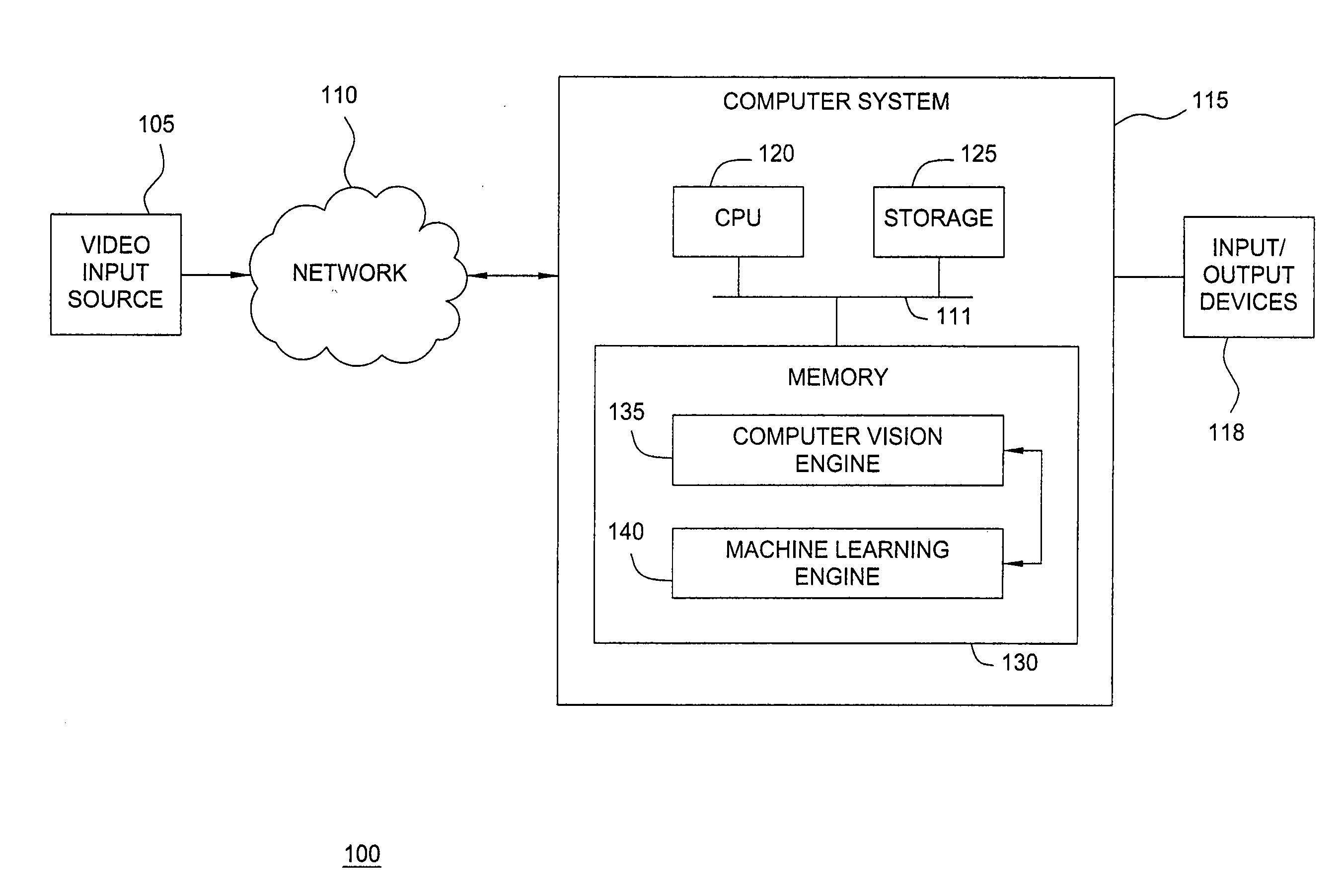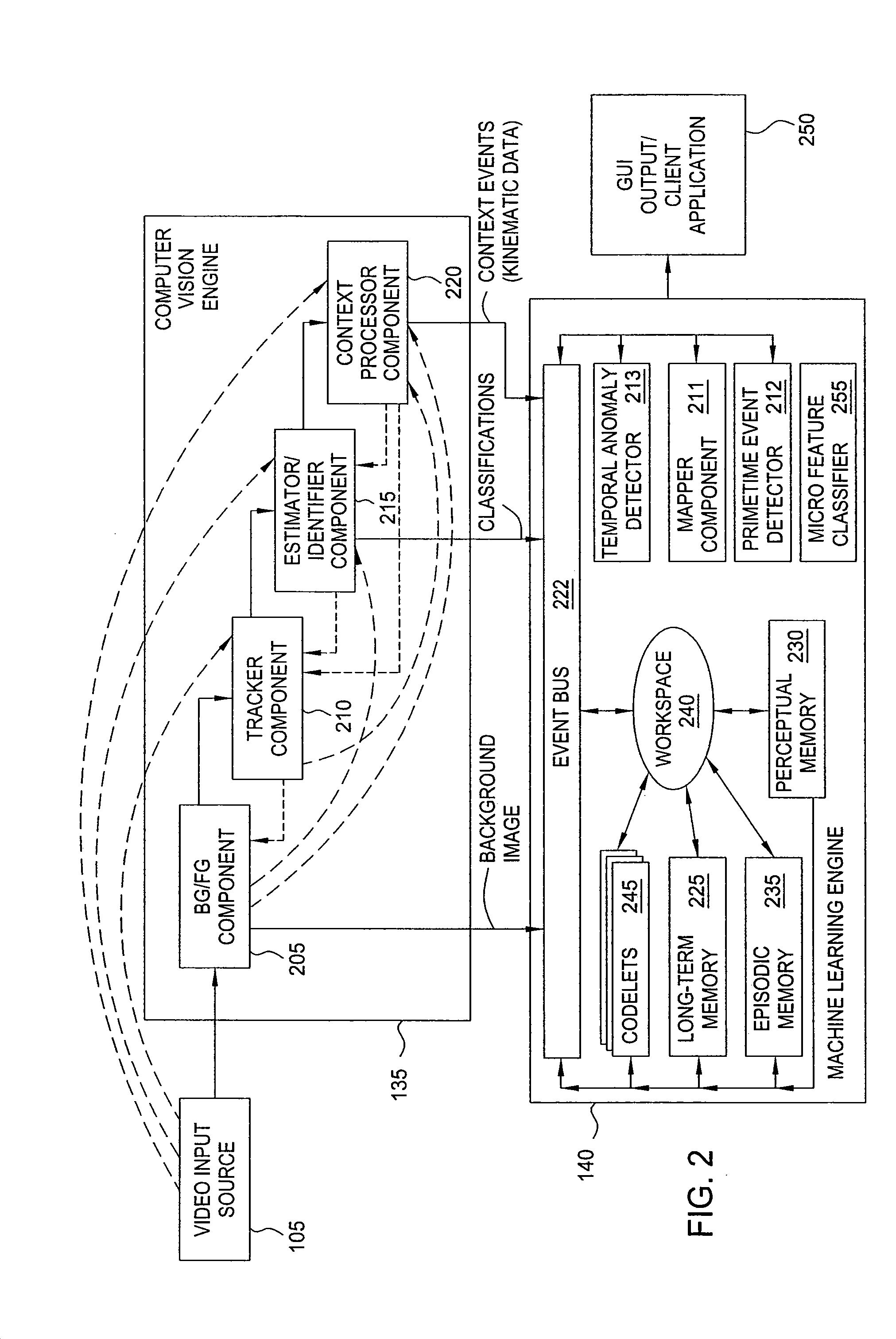Unsupervised learning of temporal anomalies for a video surveillance system
a video surveillance system and learning technology, applied in the field of sequence analysis techniques, can solve the problems of system inability to recognize behavior, video surveillance systems with recognition capabilities that are labor-intensive and prohibitively expensive to maintain or adapt for different specialized applications, and video surveillance systems that are typically unable to recognize new patterns of behavior
- Summary
- Abstract
- Description
- Claims
- Application Information
AI Technical Summary
Benefits of technology
Problems solved by technology
Method used
Image
Examples
Embodiment Construction
[0019]Embodiments of the invention provide techniques for analyzing a stream of video frames to identify temporal anomalies. More specifically, one embodiment includes a video surveillance system configured to identify when agents depicted in a video stream engage in anomalous behavior, relative to the time-of-day (TOD) or day-of-week (DOW) at which the behavior occurs. In one embodiment, a machine-learning engine may establish the normalcy of a scene by observing the scene over a specified period of time. Once the observations of the scene have matured, the actions of agents in the scene may be evaluated and classified as normal or abnormal temporal behavior, relative to the past observations.
[0020]In one embodiment, the video surveillance system generates a background model representing the background elements of a scene. The background model generally represents the static elements of a scene captured by a video camera. For example, consider a video camera trained on a stretch of...
PUM
 Login to View More
Login to View More Abstract
Description
Claims
Application Information
 Login to View More
Login to View More - R&D
- Intellectual Property
- Life Sciences
- Materials
- Tech Scout
- Unparalleled Data Quality
- Higher Quality Content
- 60% Fewer Hallucinations
Browse by: Latest US Patents, China's latest patents, Technical Efficacy Thesaurus, Application Domain, Technology Topic, Popular Technical Reports.
© 2025 PatSnap. All rights reserved.Legal|Privacy policy|Modern Slavery Act Transparency Statement|Sitemap|About US| Contact US: help@patsnap.com



